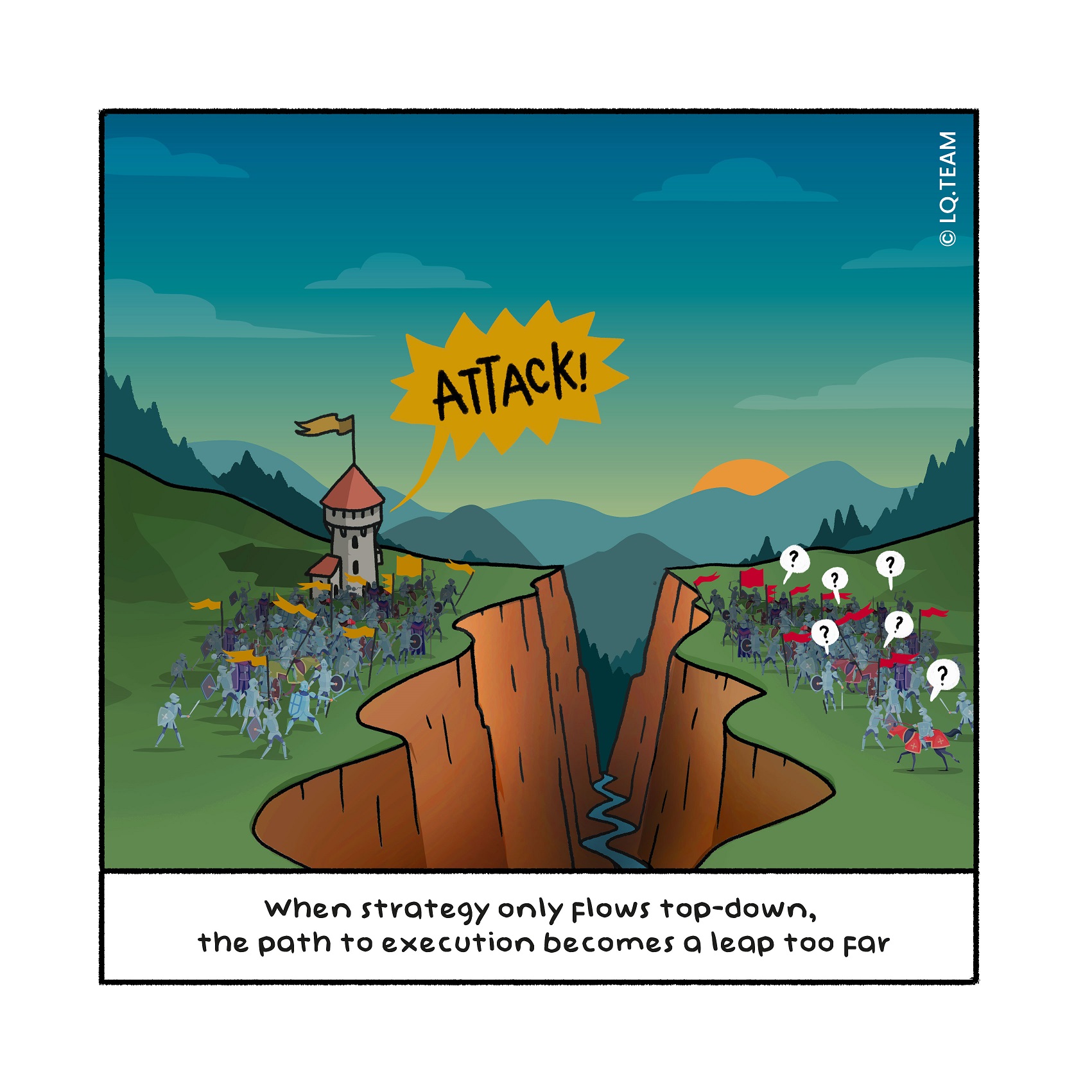
Nut to crack: How do you implement the strategy through layers in the organisation?
A change in strategic direction often drives organisational change. The organisational strategy provides the contextual basis for the why of the change. However, a common problem is that strategy implementation and the associated organisational changes stall in the middle layer of the or- ganisation. That is where managers experience the practical consequences and where theory and practice often prove difficult to reconcile. How do you prevent the implementation from stagnating halfway through? And how can you ensure the strategy has maximum change power at each level in the organisation?
Nutcracker: Start with the front line
Reverse your thinking. If you approach strategy implementation bottom-up in- stead of top-down, you initiate a different dynamic. In other words, when you think about strategy implementation, think about the customer first, then the customer contact agents and operators, then the front-line managers, then the middle managers, then the senior managers, and lastly, the top managers. This way, you initiate a different conversation, interwoven with practical exam- ples. Spotify sets a prime example of this approach. Top management defines a strategic course; the dot is placed on the horizon, with many financial and qualitative parameters. Every four months, the path to achieve this dot on the horizon is determined based on bottom-up input from the field: competitor information, customer information and information technology.
The following example illustrates in more detail how you can get the strategy implementation process to gain momentum if you are willing to drive this process both top-down and bottom-up.
Real-life example: A strategic crash test
The new strategic course has been determined. Its rollout follows the hierarchical line: topdown. Middle managers need help to reconcile this new strategy with their daily practice. The implementation is stagnating. Managing director Yong Jin debates how to break the impasse.
He decides to reverse the process. Instead of topdown, he goes directly to the people in the field: sales employees, production employees, etc. With the strategy team, he organises work sessions with them and the directors of his own management team. He asks the employees to identify the most considerable obstacles to applying the new strategy in practice, and invites them to discuss this with the directors present. He asks the middle managers to facilitate these sessions. As a result, middle man agers see firsthand that the squeeze they feel between strategy on paper and the brutal reality is not only their problem but also being taken seriously by directors and employees. Based on this “crash test”, Yong Jin finetunes the strategy, ensures he documents the answers to the frequently asked questions and continues the rollout to middle management – this time with a more robust story that can work in the eyes of managers and employees and with solid answers to the difficult questions about how the strategy will work in practice.
Tip for change leader
By visually connecting the projects related to building the organisation to annual goals and reconnecting them to the essential goals in the longerterm business strategy, you make the connections between shortterm and longterm goals visible to managers and employees. An instrument such as an Xmatrix from the Lean Six Sigma instruments can help with this visualisation. There are several videos on YouTube which explain how this instrument works.
Tip for change enabler
Design skiplevel conversations; these are conversations in which people from different layers in the organisation, who don’t usually speak to each other, or speak very little, discuss the planned change and its consequences. This reduces the distance between all hierarchical layers and thereby removes traditional blockages.
Kernel: Think in terms of the inverted pyramid
When rolling out and implementing strategy, as well as other change initia- tives, think two-directionally: the inverted and traditional organisational pyra- mid, from the front line to top management and from top management to the front line. As a result, you will discover the real dilemmas and issues much earlier, and you can proactively remove obstacles in the implementation pro- cess. This makes the implementation much simpler and more realistic.

